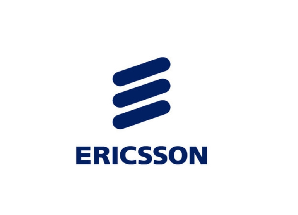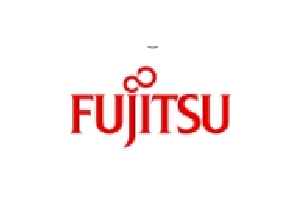MasOrange to scrap Huawei and ZTE in Ericsson 'open RAN' shift – report
ZTE, a vendor of 5G networks under Chinese government control, does not figure prominently in Europe's telecom landscape. For most telcos and their own state authorities, it looks far too close to the regime of Xi Jinping to be allowed anywhere near critical communications infrastructure. Unlike Huawei, its bigger Chinese rival, ZTE cannot easily deny these connections. Its own annual report identifies Zhongxingxin, a state-owned entity, as its biggest shareholder. Yet in 2019, Orange took the controversial step of introducing ZTE into its Spanish network.
Until then, it had relied on a mixture of Huawei and Ericsson for its 4G radio access network (RAN). But Orange executives including Arnaud Vamparys, then Orange's senior vice president of radio networks, liked what they saw at ZTE. "It has very good technology and quality, even in [5G] standalone mode, with very good results," said Vamparys, now Orange's European CTIO, during a conversation with Light Reading in early 2020.
ZTE subsequently entered service in parts of the Basque territory, replacing Ericsson, according to sources. But its stay in the mountainous northern region may soon be over. In March, Orange Spain completed a merger with local rival Másmóvil, and MasOrange, the resulting entity, does not appear to share Orange's former enthusiasm for Chinese vendors. Over the next few years, it plans to evict ZTE from the Basque region and cut back on Huawei in other parts of Spain, according to press reports originating with Expansion newspaper. Ericsson looks set to be the main beneficiary.
ZTE, which is said to account for about 4% of the MasOrange footprint, will be removed by the end of 2027 and replaced by Ericsson, according to Expansion's report. Over the same period, MasOrange is to reduce Huawei's presence from about 54% of the RAN to roughly 39%. As with ZTE, Ericsson will be the substitute. By the end of the shake-up, all this will leave Ericsson with a 61% share of the network and Huawei with the remainder.
MasOrange's press office declined to comment on the latest report. But the Expansion story says reducing Huawei's share by 15% will mean replacing it at 1,600 sites in the regions of Extremadura and Andalusia, as well as the Canary Islands. MasOrange, though, may ultimately go much further. If Ericsson measures up on various criteria, it is in line to become MasOrange's sole RAN vendor, substituting for Huawei across the remainder of the Chinese vendor's footprint in 2028 and 2029, said Expansion.
European resistance
This would mark yet another European setback for the Chinese equipment maker, which has been turfed out of several countries in the region on grounds of national security. Opponents say its network software could include "backdoors" allowing the Chinese state to spy on Europeans or cripple national infrastructure. Huawei, for its part, insists it has been subject to far more rigorous scrutiny than any other equipment vendor and that investigators have uncovered no evidence of malicious code. Sabotaging equipment, it points out, would jeopardize its commercial relationships with customers.
While several governments have banned Huawei and ZTE, the European union has expressed disappointment at the inaction of other member states, most of which have done little to curb so-called "high-risk vendors" despite official warnings. In June last year, Thierry Breton, the EU commissioner for the internal market, complained that "only ten" countries had implemented EU recommendations. "This is too slow, and it poses a major security risk and exposes the union's collective security, since it creates a major dependency for the EU and serious vulnerabilities," he said.
In Spain, where there have been no stringent rules prohibiting the use of Huawei and ZTE in the RAN, MasOrange appears to be acting in anticipation of a tougher stance against Chinese vendors by local authorities. So far, the only notable restriction stops Chinese vendors from participating in rural 5G projects where public funding is available.
MasOrange's switch to Ericsson might still leave Spain heavily dependent on Chinese suppliers for its 5G infrastructure. According to a 2020 report from Strand Consult, a Danish analyst company, Vodafone Spain was then using Chinese vendors for about 80% of its 4G RAN. For commercial and technical reasons, operators have typically sourced 4G and 5G technologies from the same vendor.
Vodafone, moreover, has resisted Europe-wide campaigns to ban Huawei from the RAN, formerly promising only to replace Chinese vendors in the "core," the control center of the network, at an estimated cost of €200 million (US$217 million). Vodafone is, nevertheless, now carrying out a major tender for the 170,000 basestations it boasts across its entire European and African footprint. Onlookers think the template it has deployed in the UK and Romania, where Vodafone is switching from Huawei to an "open RAN" mix of Samsung and other suppliers, could be extended across the continent.
More single-vendor open RAN in the offing
Open RAN, a set of interfaces supporting interoperability between different vendors, seems a feature of MasOrange's plans, too. According to the Expansion report, the decision to make Ericsson the sole RAN vendor will be determined partly by the Swedish vendor's adherence to open RAN specifications. With those, MasOrange could theoretically in future switch from Ericsson to another vendor for a subset of the RAN, instead of replacing the whole network.
The move would, nevertheless, make it entirely dependent on Ericsson and do nothing to aid the smaller vendors that see open RAN as an opportunity. Industry efforts at diversification of the market through open RAN have largely gone nowhere. Far from losing global market share, Ericsson, Huawei and Nokia, the dominant trio, grew it marginally from 74.9% in 2022 to 75.1% last year, according to data from Omdia, an analyst firm (and Light Reading sister company).
But a MasOrange shift to Ericsson as a single RAN vendor could sit awkwardly with recent comments by Bruno Zerbib, Orange's chief technology officer. "If there's a democracy with only one candidate, is it really a democracy?" he said when asked to comment at Mobile World Congress on the $14 billion open RAN deal between AT&T and Ericsson, announced in December last year.
The Expansion report appeared weeks after authorities in Germany risked further EU criticism with new rules. Instead of banning Huawei, they have said operators may continue to use its RAN hardware and software provided its management systems are replaced by the end of 2029. Critics doubt the feasibility of the scheme, noting that Huawei would have to open its proprietary interfaces to allow another provider in.
It would also still contribute the basestation software. "The baseband unit is a security issue," said Earl Lum, the president of analyst company EJL Wireless Research. German telcos still heavily reliant on Huawei may eventually come under pressure to replace those baseband units, besides the management systems, and retain only Huawei's radios, he thinks. And that would demand an even greater acceptance by Huawei of open RAN, a concept the Chinese vendor still publicly opposes. For now, there is no sign Germany's approach is being followed in other parts of Europe.




